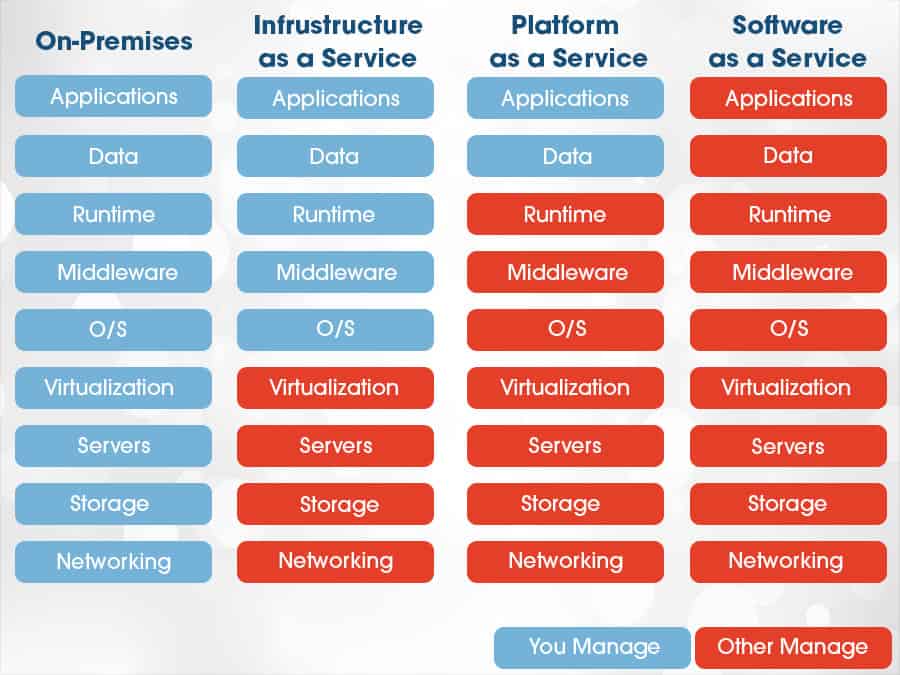Universal Cloud Service: Versatile and Scalable Solutions for Every Sector
Universal Cloud Service: Versatile and Scalable Solutions for Every Sector
Blog Article
Achieve Seamless Scalability With Cloud Solutions
In the ever-evolving landscape of cloud services, attaining seamless scalability stands as a keystone for modern organizations seeking to remain versatile and affordable. The quest for smooth scalability with cloud services reveals a globe of possibilities for those prepared to welcome the transformative power of vibrant resource management.
Benefits of Cloud Scalability
Cloud scalability uses companies the adaptability to dynamically readjust sources based on demand, making certain optimal performance and expense efficiency. One crucial advantage is the ability to scale resources up or down promptly in response to changing work. This dexterity makes it possible for organizations to fulfill transforming consumer demands without over-provisioning sources, eventually leading to cost savings. Scalability also improves efficiency by ensuring that systems can take care of increased website traffic or workload without experiencing downtime or slowdowns. By effectively allocating resources, companies can keep high degrees of efficiency throughout peak times without unneeded expenditures during quieter periods. Furthermore, cloud scalability promotes innovation and testing by allowing services to quickly examine new ideas and range them as required. This flexibility encourages a culture of continual renovation and adjustment, enabling companies to remain competitive in a quickly evolving market landscape. Inevitably, the advantages of cloud scalability prolong beyond expense financial savings to include improved performance, agility, and innovation.
Secret Attributes for Scaling
Efficient scaling in cloud services counts on key functions that enable organizations to change sources dynamically based on demand. One necessary function for scaling is elasticity, permitting sources to scale up or down in response to changing workloads. This ensures that organizations can satisfy performance needs without over-provisioning sources. An additional essential function is scalability, making it possible for systems to handle enhanced work by adding resources effortlessly. This function is crucial for accommodating development without jeopardizing efficiency. Furthermore, automation plays an important role in scaling by automating the provisioning and de-provisioning of resources based upon predefined policies. Automation reduces human intervention, boosts performance, and guarantees fast action to altering demands. Monitoring and analytics tools are likewise vital for scaling, offering understandings right into resource usage, performance metrics, and prospective bottlenecks. These tools allow companies to enhance and make informed choices resource allocation for effective scaling. Generally, these vital functions collectively empower companies to accomplish seamless scalability in cloud services.
Executing Auto-Scaling Approaches
To effectively optimize source appropriation and adapt to varying workloads, companies must strategically execute auto-scaling strategies in their cloud solutions infrastructure. Auto-scaling permits systems to immediately readjust the variety of calculate resources based upon real-time need. There are numerous auto-scaling approaches that companies can employ, check these guys out such as predictive scaling, which uses historical information to anticipate future resource needs, and responsive scaling, which reacts to present workload adjustments.

Ideal Practices for Scalability
For companies intending to boost their scalability in cloud solutions, executing ideal methods is important for optimal efficiency and source monitoring. One key best practice is developing applications with a microservices design. This method breaks down applications right into smaller sized, independent services that can be deployed, updated, and scaled individually, permitting better flexibility and scalability.
An additional vital technique is using containerization innovation, such as Docker or Kubernetes. Containers make it possible for the packaging of applications and their dependences right into separated devices, making it much easier to scale elements independently and deploy them consistently across different settings.
Furthermore, implementing automated deployment and framework as code (IaC) can improve scalability efforts (linkdaddy cloud services). Automation devices like Terraform or Ansible assistance in provisioning and managing sources effectively, lowering hands-on mistakes and allowing rapid scalability
Additionally, monitoring efficiency metrics, establishing signals, and conducting normal capability preparation are vital methods to ensure proactive Continue scalability monitoring. By adhering to these finest methods, organizations can achieve smooth scalability in their cloud services while enhancing performance and resource usage.
Tracking Efficiency Metrics
When evaluating the efficiency of cloud solutions scalability, very closely keeping track of efficiency metrics is vital for making sure optimal functionality and resource allotment. By continuously tracking key performance indicators (KPIs) such as action times, throughput, latency, and source usage, organizations can acquire beneficial insights into the wellness and effectiveness of their cloud framework. Keeping track of efficiency metrics permits the early discovery of possible bottlenecks or issues that could impact scalability, making it possible for proactive procedures to be required to address them prior to they intensify.

Conclusion
To conclude, achieving seamless scalability with cloud solutions is vital for organizations to maximize performance, improve advancement, and keep high efficiency degrees throughout peak times. By leveraging the benefits of cloud scalability, carrying out auto-scaling techniques, making use of essential features such as elasticity and automation, and complying with finest techniques like application design and performance monitoring, businesses can effectively scale their systems while making the most of source utilization and performance.
The pursuit for smooth scalability with cloud services reveals a globe of opportunities for those ready to you can find out more accept the transformative power of dynamic source administration.
Cloud scalability offers organizations the versatility to dynamically change sources based on demand, guaranteeing optimum efficiency and cost effectiveness. One more key feature is scalability, making it possible for systems to manage enhanced workload by adding resources seamlessly.For organizations aiming to enhance their scalability in cloud services, executing best methods is critical for optimum performance and source monitoring.When assessing the effectiveness of cloud services scalability, very closely monitoring performance metrics is critical for guaranteeing optimal functionality and source allowance.
Report this page